Attainment Gap: What It Is and 7 Strategies To Close It In Schools
The attainment gap between disadvantaged pupils and their peers is more apparent than ever. It influences pupils’ educational outcomes and lifelong prospects.
In this article, we look in depth at what the attainment gap is, the causes and the effects. Plus 7 strategies to try in your school today to help close the attainment gap.
What is the attainment gap?
The attainment gap measures the educational outcomes of those eligible for free school meals and compares them with the proportion of pupils who have never received free school meals.
Young people receiving free school meals and pupil premium funding face educational inequalities.
This gap develops in the early years and is already measurable by age 5, increasing throughout a pupil’s school years. Ultimately, the attainment gap results in many 19-year-olds underperforming and leaving education without qualifications in English and maths. This greatly limits their options for future work.
In April 2011, the Department for Education introduced pupil premium to state schools in England to address the attainment gap.
But what can pupil premium be spent on?
The pupil premium grant aims to assist education providers in implementing initiatives to help pupils reach the expected level by the end of their education. It can be used on a wealth of evidence-based interventions to improve the attainment gap for vulnerable students.
During inspections, Ofsted assesses pupil premium spending to ensure correct and effective spending.
Post-pandemic, the educational outcomes of disadvantaged pupils deteriorated increasing the attainment gap. In addition to pupil premium funding, the government introduced a recovery premium grant to address the growing attainment gap.
The Senior Leader’s Guide to Pupil Premium [Updated for 2023/24]
Everything you need to know about using pupil premium funding effectively to close the attainment gap.
Download Free Now!How is the attainment gap measured?
Many systems are in place to measure the attainment gap in England between disadvantaged pupils and their peers who are not eligible for pupil premium funding.
By age 5, the attainment gap between pupil premium children and their peers is approximately 5 months. The Education Policy Institute found this gap increases to 19 months by Year 11. Further evidence suggests this has increased further since Covid-19.
One key indicator the DfE use to measure the attainment gap between disadvantaged pupils and their peers is statutory exams:
- Key Stage 2 SATs
- Key Stage 4 GCSEs
Additional measures of the attainment gap within the English education system include:
- Reception baseline benchmarks using the Early Years Foundation Stage Profile
- Phonics screenings in Year 1
- Year 2 SATs in reading, writing and mathematics
- Chronological reading age
- Attendance
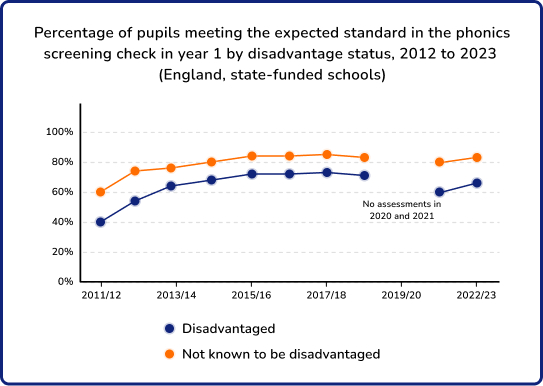
At the end of Key Stage 1 in 2023, the proportion of children eligible for the pupil premium grant was 23%. Of these students, 67% met the expected standard in the phonics screening test compared to 83% for their non-disadvantaged classmates.
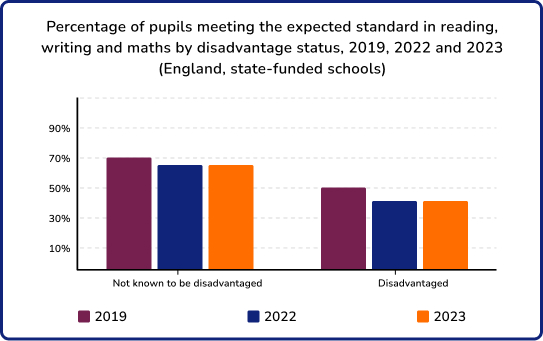
In 2023, 30% of pupils were considered disadvantaged by the end of Key Stage 2. 44% of disadvantaged pupils met the expected standard in reading, writing and maths combined compared to 66% of other pupils. A difference of 22 percentage points.
Of those eligible for free school meals in 2023 only 28.4% achieved a grade 5 or above in English and maths compared to 55.4% of their peers.
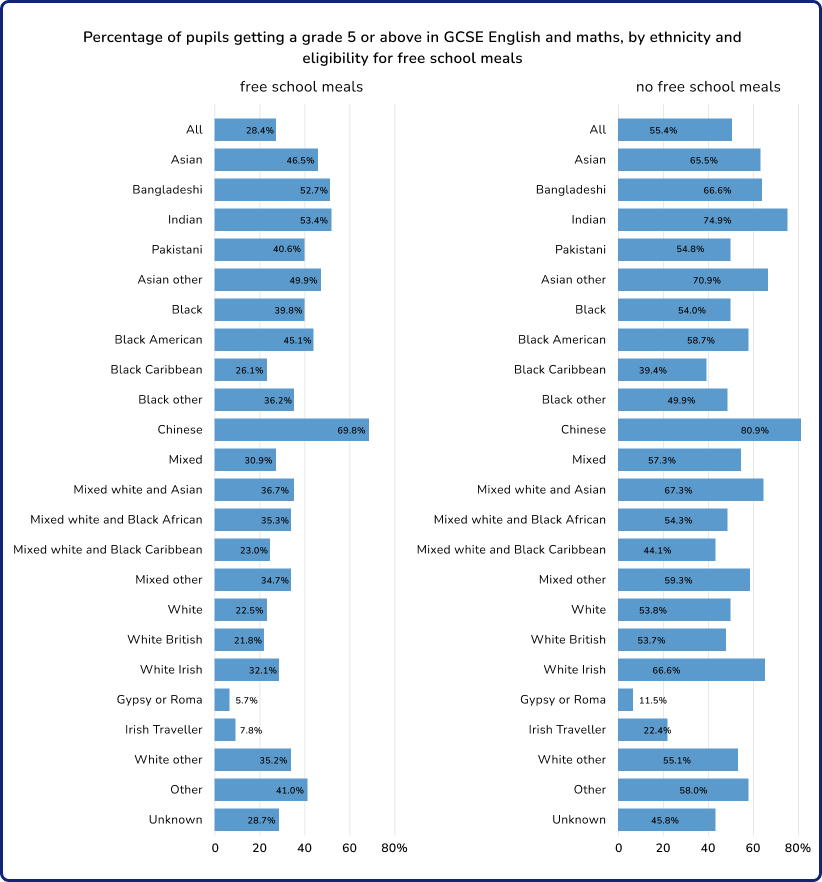
Since the pandemic, the attainment gap and the number of pupils eligible for pupil premium have increased.
While the 2023 figures show a small improvement, the gap in outcomes is still significantly higher than in 2019.
What are the effects of the attainment gap?
According to the Nuffied Foundation, the attainment gap can have a lifelong negative impact.
Disadvantaged pupils may have limited vocabulary and lack the necessary skills before they even start Reception.
Throughout their school years, pupils from lower socioeconomic backgrounds are more likely to be persistently absent. In turn, they are less likely to be able to access the curriculum, resulting in gaps in knowledge.
By the end of Key Stage 2, disadvantaged pupils are on average 3 years behind their chronological reading age. This reduces their ability to access the secondary curriculum in the way their peers can when they transition to Key Stage 3.
Those eligible for pupil premium are also less likely to go on to higher education or stay in university.
What causes the attainment gap in education?
A multitude of factors contribute towards the attainment gap. Whilst many of these are outside the direct control of schools, it is important to understand their influence on educational outcomes.
Many causes of inequalities can overlap for individuals. It is important to know the young people in your school and use structured conversations to understand their context.
1. Socioeconomic status
Socioeconomic status is the primary predictor of educational outcomes. Poverty in deprived areas correlates with poorer health, mental health and nutrition which impacts the ability to pay attention to learning.
Poorer households spend a great proportion of their income on housing costs, food and utility bills meaning that they aren’t able to meet the cost of:
- School uniform
- Travel to school
- School trips
- Educational resources
Households lacking educational resources such as computers, printers or desks may impact a pupil’s ability to complete homework.
2. Pupil with SEND (Special Educational Needs and/or Disabilities)
Pupils with Special Educational Needs are more than twice as likely to be eligible for free school meals. The attainment gap is also twice as large as it is for disadvantaged pupils.
Often, the resources and additional support required is costly and unaffordable for schools — even with pupil premium funding.
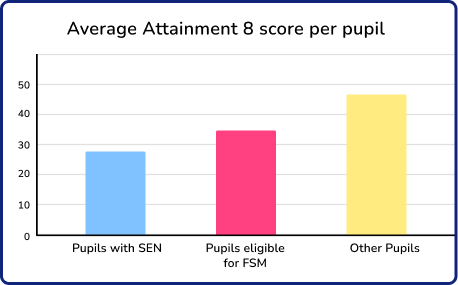
3. Digital gap
During the pandemic, the digital gap became more apparent. As learning moved online, disadvantaged pupils without access to the internet were missing virtual classes.
Although the Department for Education’s laptop scheme provided over 1.6 million digital devices delivered to low-income pupils, the attainment gap remains.
Approximately 560,000 pupils do not have access to the internet at all with a further 900,000 only having access through a mobile network. Many of these have to share access with other household members.
This had clear implications for the way schools developed their homework policies and support work outside the classroom.
4. Parental involvement
Children spend most of their time outside of school, meaning parents and carers have a significant impact on the success of their educational outcomes.
Parental involvement ranges from reading to a child in their early years to being a role model in communicating with the school — particularly when negative behaviour demands that a school and home work closely together.
While parental engagement is one of the less understood causes of educational disadvantage, it is significant.
5. Ethnicity
An additional factor to consider when looking at the attainment gap is ethnicity.
Of eligible pupil premium children, the lowest performing ethnic group is usually white students. Often, Chinese students perform better than their classmates.
Although there are no rigorous tests, reasons for this may include:
- Parental engagement of different ethnic groups
- Age of parents
- High aspirations of ethnic minority groups
- Long-term parental unemployment of White British pupils
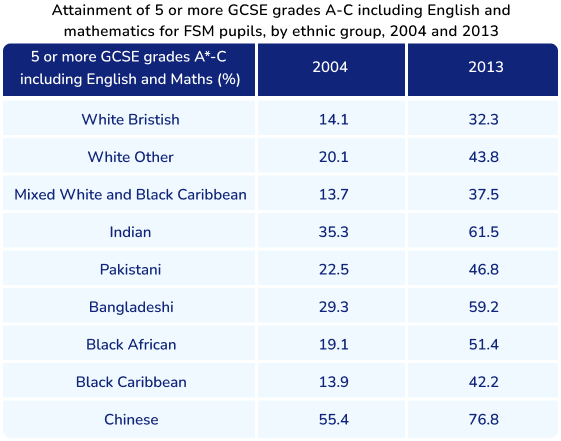
6. Gender
An educational attainment gap between genders is evident in all stages of compulsory education in England.
10% fewer boys achieve at least 5 good GCSE passes. Similarly to the pupil premium attainment gap, research shows that the gender attainment gap also accelerates in secondary school.
Reasons for this are complex and not fully understood. However, they can be linked to education factors such as:
- Examination systems
- Teacher input
- School culture
7. Geographical location
Increasing evidence suggests that if your school is in London, the attainment gap will be smaller than in a local authority in a different part of the country.
Educational outcomes are likely to be better if your institution is in the south east of England when compared to the Midlands and North.
The attainment gap graph below shows the regional differences in attainment at A Level, according data from the Lords library.
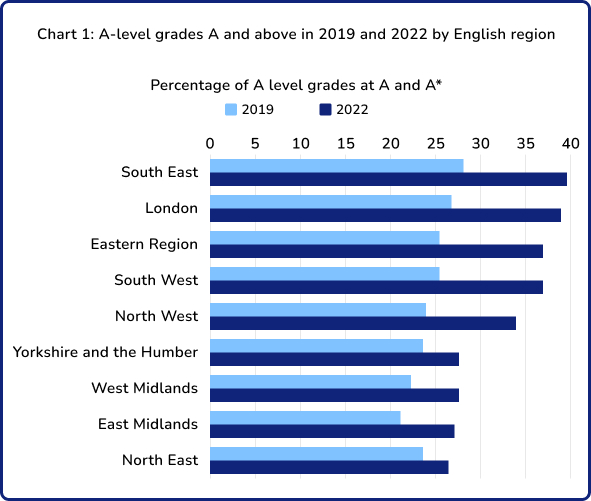
GCSE results follow a similar pattern.
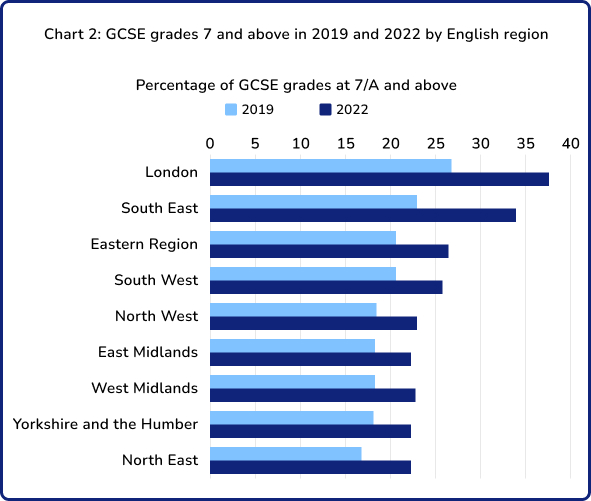
8. Learning facilities
Despite there being little evidence to suggest the state of school facilities in England improves pupil attainment, issues such as RAAC building materials and declining facilities have triggered successive governments to announce rebuilding programmes to help close the attainment gap.
Predominantly, existing studies are from the US where better school facilities are linked to greater teacher effort and better educational outcomes for pupils.
9. English as an additional language
Many pupils attend school in England with little to no English. This greatly impacts knowledge and understanding of the curriculum.
There is a pronounced attainment gap between EAL students and their classmates at primary school. But it often declines before the end of secondary school.
Typically, EAL learners with lower socioeconomic status leave school with lower and fewer qualifications than their peers.
10. Teacher’s role
Evidence-based research shows that high-quality teaching and class level interventions are effective in addressing the attainment gap
‘we could argue that expert teaching consistently enables rapid and robust pupil learning.’
Peps Mcrea
Naturally, continuing professional development and a culture that supports teachers to focus on strategies that make a difference should underpin this.
According to the Education Endowment Foundation Teaching and Learning Toolkit, teachers should implement interventions for a high impact. Higher education performance of pupils links to:
- Teacher qualification level
- Pupil expectations
- Behaviour management
- Instructional technique
High-quality teaching and learning have a positive impact on closing the attainment gap
11. School culture
School leadership and culture are crucial in closing the attainment gap.
Many of the interdependent variables previously mentioned link to school culture. For example, valuing continued professional development sets high academic expectations for children from disadvantaged backgrounds to do well.
Schools that perform less well tend to lack a sense of purpose and have low aspirations for those in their care.
7 strategies to close the attainment gap
Understanding what impacts the disadvantage gap helps schools work on improving the educational outcomes for these pupils. Based on these factors, here are 7 strategies to help close the attainment gap.
1. Understand the barriers to learning
Do not think of children eligible for the pupil premium grant as one singular group. Schools and academies must understand their contextual factors.
Treat young people as individuals. Schools should consider:
- Ethnicity
- Socioeconomic background
- Social mobility
- Moving schools more often
- SEND
Collate this data and record it in your school’s information system. Use it to identify the correct interventions for individuals and measure the impact.
2. Use pupil premium funding effectively
It’s often tempting to use the pupil premium funding for school trips and rewards but it’s important to focus on successful pupil premium strategies that raise educational outcomes.
Use funding for interventions linked to educational outcomes. Ultimately, young people need to leave your educational provision with the qualifications and qualities needed for the next stage in their lives.
Similarly, stop any pupil premium strategy that failed to deliver results.
3. Quality-first and outstanding teaching
Many impactful strategies in the EEF’s Teaching Toolkit relate to teaching strategies. They require careful implementation and continued professional learning as well as time for teachers to understand the needs of the individual students in their care.
This can be particularly challenging in secondary settings, where each teacher is responsible for instructing a great number of individuals.
Address individual needs and personalise teaching and learning strategies. It may be tempting to remove pupils from learning for extra support. However, great teachers make a positive impact.
Providing a simple one page profile for each pupil is an effective way of sharing simple strategies with teaching staff.
Bespoke learning programmes focusing on each pupil’s needs and working one to one help ensure maximum success. Evidence suggests that one to one tuition and mentoring is one of the most effective ways to close the attainment gap.
Schools can gather and use their data to identify trends in disadvantaged pupils’ performance and use this information to create strategies.
Research shows that high-quality teaching in partnership with a calm learning environment enables children from all socioeconomic backgrounds to attain the expected standard or higher.
4. CPD for school staff
Teachers often feel overwhelmed during insets and training days as there is a lot of information they need to take in. Inset days usually have little impact on classroom practice.
Providing teachers with less information but more frequently can make a more positive impact.
Give space for teachers to talk to teachers about teaching. For example, a 15 minute forum where teachers share methodologies and ideas can develop a culture of collegiate responsibility.
CPD should be available for teachers to keep up to date with the latest quality-first teaching methodologies. A huge volume of research is available but distil this before sharing.
Communicate effective CPD through subject specialists, rather than generic approaches. Provide time for subject teams (whether at primary or secondary) to discuss the implementation of ideas. Structure discussions to talk about the progress of individual children.
Schools at any key stage can support educators and specialists by providing ongoing professional development and executing tiered systems of support to create and apply evidence-based interventions.
5. High expectations of students
Both secondary and primary teachers need to ensure they are reflective and set high expectations for their pupils. In turn, they should do the same and hold themselves to high standards.
Celebrate pupil achievements. This encourages pupils and those around them to continue working hard.
6. High-quality interventions
Link teaching and learning interventions to classroom work, monitoring attainment and intervening quickly to address each student’s learning needs. Involving the pastoral and academic teams here is essential.
Communicate the link between interventions and educational outcomes. For example, if you have non-teaching Heads of Year in a secondary setting, ensure they understand the link between great attendance and better academic achievement.
Anyone running an intervention should have the necessary training and expertise to deliver interventions, provide feedback and monitor progress
At Third Space Learning, maths experts designed our one to one intervention programme with teachers and school leaders in mind to reduce the workload on teachers while maintaining high impact for pupils.
Up to 15 pupils receive simultaneous one to one tutoring from highly qualified maths specialist tutors.
Our academic team provides high-quality training for all tutors. They receive ongoing CPD to stay up-to-date with the latest teaching pedagogies.
Read more: The Most Effective Intervention Strategies In Primary And Secondary Schools
7. Improving attendance
Understand that attendance, behaviour and emotional support are necessary but not sufficient for academic success.
They provide an effective foundation for learning, but expert teaching is the key to securing better education outcomes.
Schools need to assess the factors affecting learning outcomes for disadvantaged children such as vulnerable children’s attendance and find solutions. This may involve:
- Offering extra tutoring and mentoring
- Providing after school or morning care
After school provisions can help bridge the attainment gap. Some pupils may not have the space or technology at home to complete homework.
Spaces for students to access technology and help to complete homework can help raise attainment. Set online homework accessible through a mobile device that doesn’t need printing or extra resources for a positive impact.
Similarly, many students from disadvantaged backgrounds may not be ready to face the school day. Providing a morning boot camp that comprises physical activity, breakfast with staff and peers and some mentoring can encourage better attendance.
How Third Space learning helps close the maths attainment gap
One to one maths tutoring
Since 2013, Third Space Learning pledged a commitment to raising attainment in maths and helping disadvantaged pupils close the maths attainment gap. We make high-quality one-to-one maths tutoring available to pupils from disadvantaged backgrounds.
How does Third Space Learning’s one to one tutoring close the attainment gap?
- We diagnose your pupils’ specific maths gaps.
Every student sits an initial diagnostic assessment to identify the learning gaps maths specialist tutors should prioritise.
Post-Session Questions follow each lesson to assess each pupil’s retained knowledge and the learning that needs more time. - We provide curriculum-aligned lessons to address learning gaps
Pupils work with the same tutor each week to help identify and address pupils learning gaps.
Each pupil logs in to the Third Space Learning virtual classroom on a computer or iPad and connects with their tutor via high quality audio headsets — provided free of charge for each pupil. - You receive regular updates and reports to have an overall and individual view of progress and who’s on track or not.
After each session, class teachers receive a report for each of their pupils on the programme. This data can be used to monitor pupil progress or inform whole-class teaching.
Find out more about using your pupil premium funding and National Tutoring Programme funding to contribute towards the cost of one to one maths tuition.
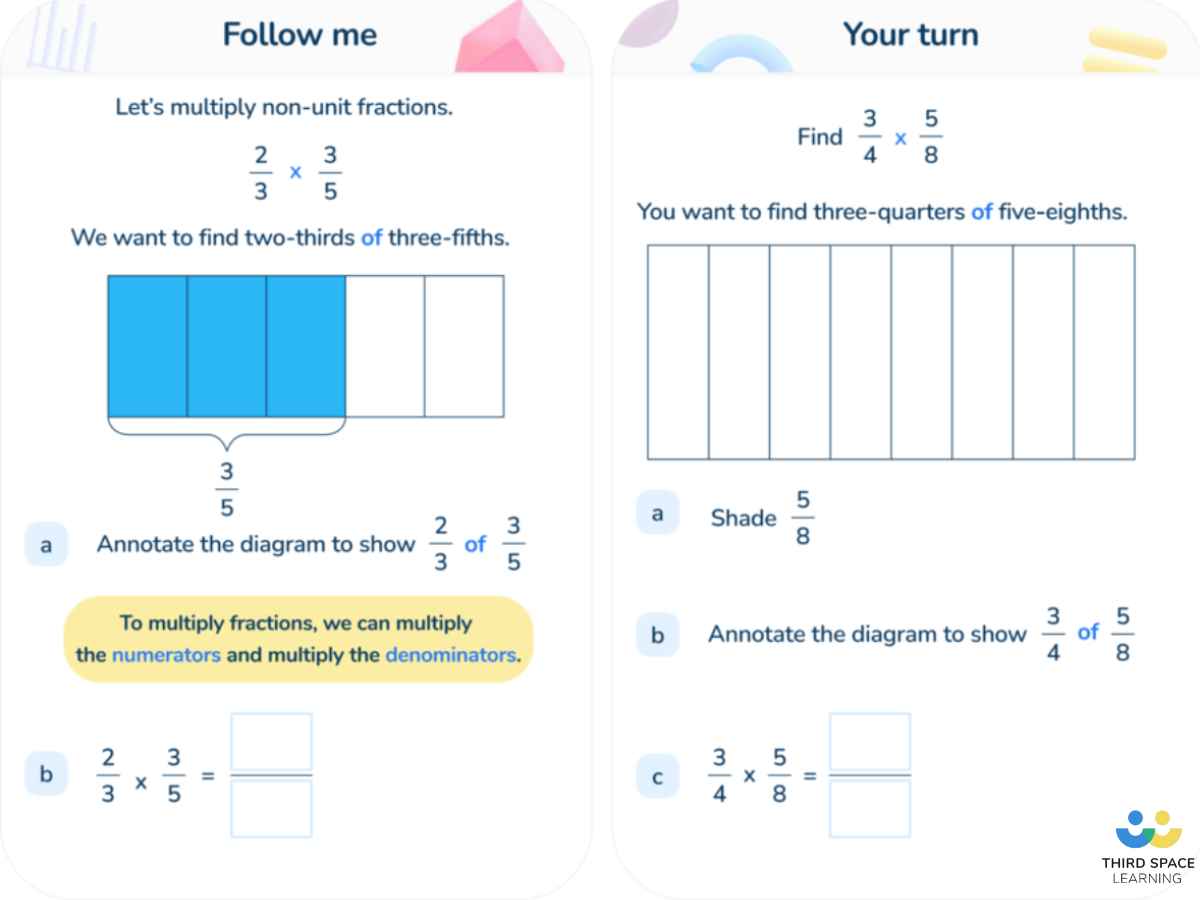
High-quality resources
Maths experts and former teachers created Third Space Learning’s classroom resources to help close the attainment gap.
Our library of over 4,000 resources for both primary and secondary teachers links closely to the National Curriculum — with the primary resources marrying up to the White Rose scheme of work.
Year after year, teachers tell us how arithmetic resources such as Fluent in Five and reasoning resources such as Rapid Reasoning help close the attainment gap and fuel pupils’ enjoyment of maths.
Many of the resources on offer are adaptable to suit the needs of your class. Use them as whole-class or individual teaching resources to help boost progress and close the maths attainment gap — while reducing teacher workload!
Register for the Third Space Learning maths hub for thousands of primary resources, or secondary schools can explore the Secondary Resource Library.
FAQs
There are many attainment gaps, but in England, the attainment gap often refers to the difference in educational outcomes between children from lower socioeconomic background and their classmates.
The main accountability measure is the progress that children make between the end of Key Stage 2 tests and their GCSEs, calculated as a Progress 8 measure. At each stage of compulsory education, the attainment gap is measured in different ways, for example:
– The phonics screening test at KeyStage 1
– Performance in reading, writing and maths at the end of Key Stage 2
– The number of good GCSE passes including English and Maths at GCSE.
– At Key Stage 1 – The proportion of children eligible for the Pupil Premium grant at the end of Key Stage 1 in 2023 was 23%. For these students, 67% met the expected standard in the phonics screening test compared to 83% for their non-disadvantaged classmates.
– At Key Stage 2 In 2023, at the end of Key Stage 2 30% of pupils were considered disadvantaged. In reading, writing and maths (combined), 44% of disadvantaged pupils met the expected standard in 2023 compared to 66% of other pupils, a difference of 22 percentage points. Whilst this was a decrease of 1% from the previous year, it is still a significant figure.
– At Key Stage 4 In 2023, those eligible for free school meals (one of the eligibility factors for pupil premium funding) only 28.4% achieved a grade 5 or above in English and maths when compared to 55.4% of their peers,
The impact of Covid-19 pandemic has had a greater impact on decreasing the attainment of disadvantaged students.
The attainment gap is proving to be stubbornly wide when examined at a national level. 2023 saw small improvements across all stages of education; however, the educational performance of disadvantaged students is still lower and the attainment gap is still wider than 2019 pre-pandemic levels.
DO YOU HAVE STUDENTS WHO NEED MORE SUPPORT IN MATHS?
Every week Third Space Learning’s maths specialist tutors support thousands of students across hundreds of schools with weekly one to one tuition designed to plug gaps and boost progress.
Since 2013 these personalised one to one lessons have helped over 150,000 primary and secondary students become more confident, able mathematicians.
Learn how the tutoring benefits those in receipt of pupil premium or request a personalised quote for your school to speak to us about your school’s needs and how we can help.

![The Senior Leader’s Guide to Pupil Premium [Updated for 2023/24]](https://thirdspacelearning.com/wp-content/uploads/2018/07/Combined-pupil-premium-guides-featured-image.png)



